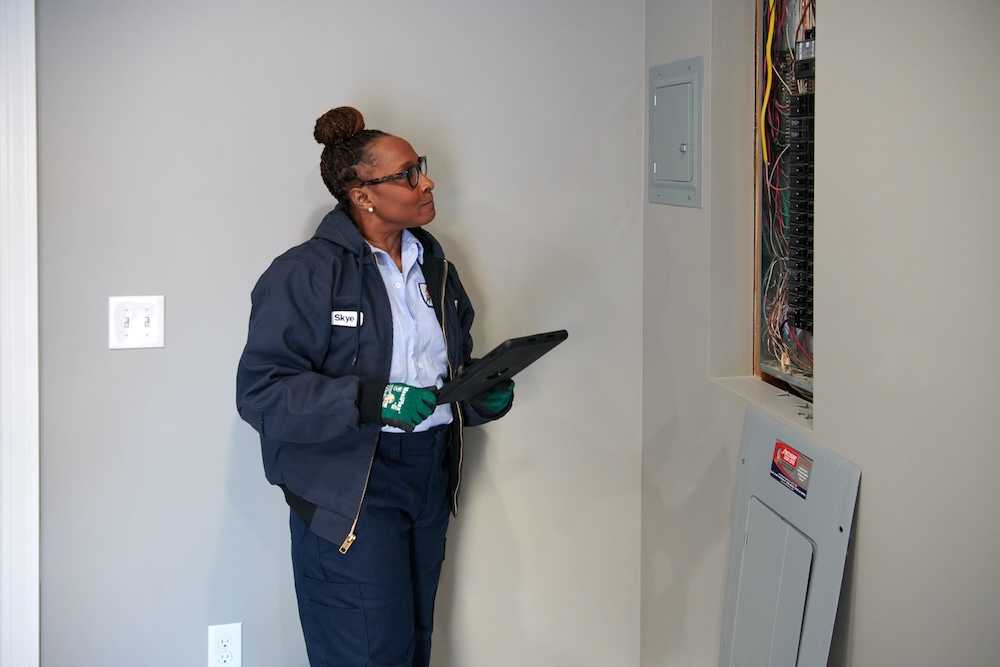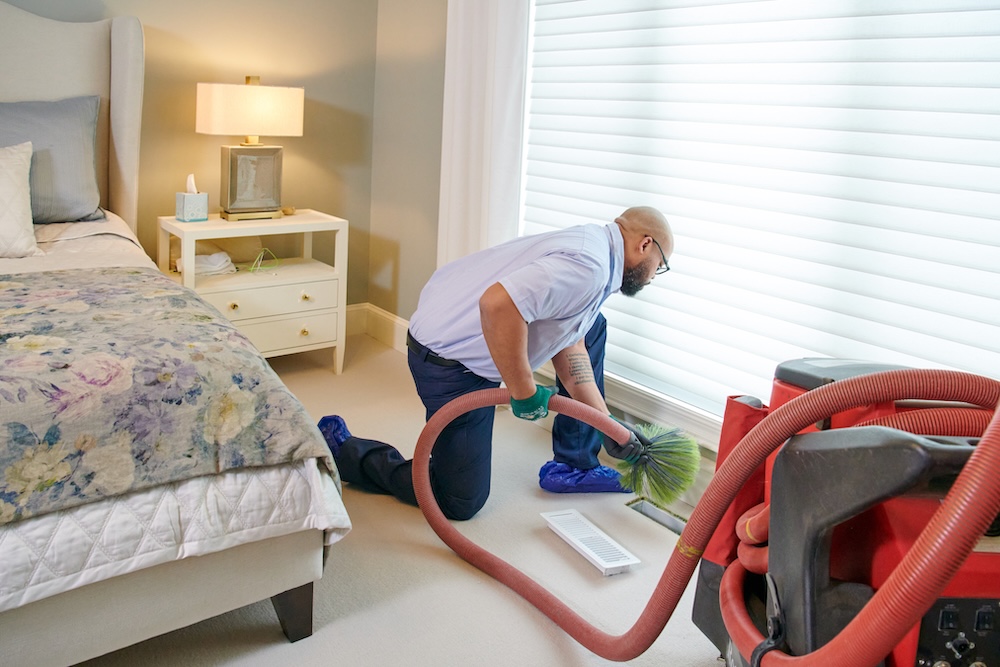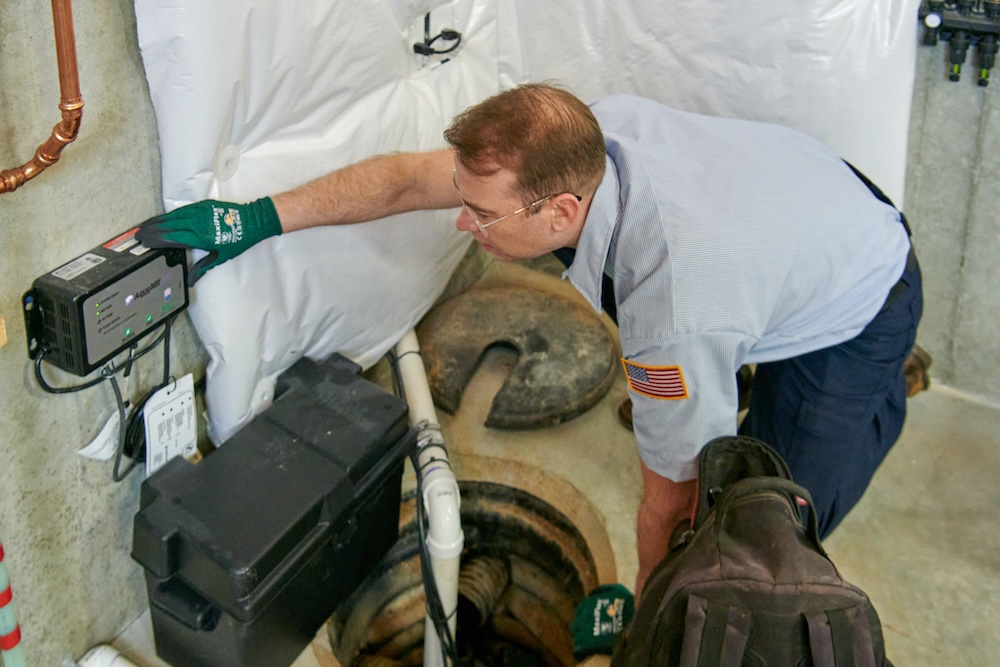BLOG
Identifying Your Outdated Electrical Wiring

Having secure wiring in your home is crucial for both safety and functionality. Outdated electrical wiring can be harmful, leading to various hazards, including electrical fires and shocks. It's hard to know how old your home's wiring is without a professional to check it, but it can be done.
There are ways homeowners can identify components of outdated wiring themselves.
A Timeline of Electrical Wiring
Understanding the evolution of electrical wiring helps in identifying whether your home has outdated systems. Below is a timeline of electrical wiring types, along with tips on how to spot them in your home.
Knob & Tube System – 1880s-1940s
Knob & tube wiring consists of single-insulated copper conductors. Electricity passes through these conductors into porcelain insulating tubes and secured with porcelain knob insulators.
- Is knob & tube wiring safe to still be used today?
- No, it is not safe to use today. While it was state-of-the-art at the time, it lacks the capacity and safety features of modern wiring.
- How to identify:
- Look for ceramic knobs and tubes in the attic or basement, and wiring running through walls without an outer sheath.
Rag Wiring – 1940-1950
Rag wiring uses cloth insulation around the wires, which can become brittle over time.
- Is it safe to use today?
- No, as the insulation degrades, it poses a fire risk.
- How to identify:
- Check for fraying cloth insulation around the wiring, often visible in older fuse boxes or exposed wiring in basements.
Non-Metallic, Armored Cable Wiring – 1960-1965
This type features conductors encased in a flexible metal sheath.
- Is this type of wiring safe to use today?
- It can be safe but should be inspected regularly for signs of wear. Ideally, you should upgrade this type of wiring to Newer Romex, non-metallic wiring.
- How to identify:
- Look for metal-sheathed cables running into electrical boxes.
Aluminum Wiring – 1965-1973
Aluminum wiring was used in the mid-1960s and early 1970s. Most households switched wiring materials due to copper shortages and easy access to aluminum conductors.
- Is this type of wiring safe to use today?
- It can be hazardous, as aluminum expands and contracts more than copper, leading to loose connections and potential fires.
- How to identify:
- Check for the letters "AL" on the wire jacket, and the wiring itself may appear silvery rather than coppery.
Newer Romex, Non-Metallic Wiring – 1973 until the present day
Romex wiring consists of insulated conductors encased in a plastic sheath, widely used in modern homes.
- Is this type of wiring safe to use today?
- Yes, it meets modern safety standards. If it’s been in your home for more than 40 years, or there are clear signs of wear, then you should consider a rewiring service.
- How to identify:
- Look for plastic-sheathed wiring often labeled "NM" or "Romex."

Signs You Might Have Outdated or Improper Electrical Wiring
Outdated or improper wiring can manifest in several ways, including:
- Flickering Lights: Indicates a poor connection or overloaded circuit.
- Burning Smells: A clear sign of overheating wiring or components, which are a fire hazard.
- Plastic or Metallic Odors: Could indicate insulation breakdown or overheating metal parts in your electrical system.
- Frayed Wires Visible: Exposed copper wires are a serious safety hazard.
- Loose Connections & Outlets: Can lead to arcing and electrical fires.
- Outdated or Broken Outlets: Old outlets may not support modern electrical loads safely.
- Electric Shocks From Outlets, Light Fixtures, or Switches: This indicates a serious wiring issue that can increase your risk of a fire.
- Blown Fuses: Frequent fuse blowing can indicate outdated wiring or overloaded circuit breakers.
- Excessive Extension Cord Use Throughout the Home: Suggests inadequate electrical outlets or circuits.
Avoiding a whole home rewiring when you have an older home can be dangerous. You are putting your belongings at risk of getting damaged from an electrical fire. You’re also putting your family’s safety at risk.
Updated wiring can prevent shocks, fires, and the stress of electrical issues across your home.
The best way to see if you’re due for a wiring upgrade is to get in touch with a qualified electrician. They can perform a thorough electrical inspection. This service ensures your wires and outlets are safe and up to electrical codes. An excellent electrician checks that all parts of your system meet electrical standards.
Anthony Plumbing, Heating, Cooling & Electric has licensed electricians who are always ready to schedule an inspection and make recommendations.
Schedule Your Rewiring Project With Anthony
If you suspect your home has outdated wiring, it’s essential to take action promptly. At Anthony Plumbing, Heating, Cooling & Electric, our electricians can inspect and rewire your home. We will update your electrical system quickly and safely, causing minimal disruption to your home and daily routine.
We use the latest tools and techniques to provide reliable and safe electrical services.
Don’t wait until it’s too late. Contact Anthony Plumbing, Heating, Cooling & Electric at (913) 298-0444 to schedule your rewiring project. Protect your home and your loved ones with professional rewiring services.





